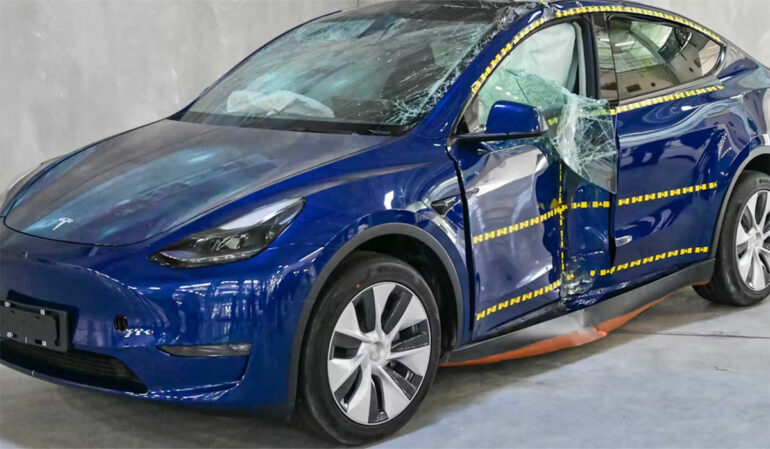The future of automobiles is electric, but many people worry about the safety of today’s electric vehicles.
Public opinion about EV crash safety often hinges on a few high-profile fire incidents. Those safety concerns are arguably misplaced, and the actual safety of EVs is more nuanced.
I’ve researched vehicle safety for more than two decades, focusing on the biomechanics of impact injuries in motor vehicle crashes. Here’s my take on how well the current crop of EVs protects people:
The burning question
EVs and internal combustion vehicles undergo the same crash-testing procedures to evaluate their crashworthiness and occupant protection. These tests are conducted by the National Highway Safety Administration’s New Car Assessment Program and the Insurance Institute for Highway Safety.
These analyses use crash test dummies representing midsize male and small female occupants to evaluate the risk of injuries. The tests can evaluate fire hazard either caused by thermal runaway – when lithium-ion batteries experience rapid uncontrollable heating – in ruptured EV batteries or gas tank leaks of internal combustion vehicles.
None of the Insurance Institute for Highway Safety crash tests of EVs have sparked any fires. New Car Assessment Program crash test reports yield comparable findings. While real-world data analysis on vehicle fires involving EVs is limited, it appears that media and social media scrutiny of EV fire hazard is blown out of proportion.
Weighty matters
What stands out about EV safety is that crash test results, field injury data and injury claims from the Insurance Institute for Highway Safety all reveal that EVs are superior to their internal combustion counterparts in protecting their occupants.
This EV advantage boils down to a blend of physics and cutting-edge technologies.
Thanks to their hefty battery packs positioned at the base of the car, EVs tend to carry considerably more weight and enjoy lower centers of gravity than conventional vehicles. This setup drastically reduces the likelihood of rollover accidents, which have a high rate of fatalities. Moreover, crash dynamics dictate that in a collision between two vehicles, the heavier one holds a distinct advantage because it doesn’t slow down as abruptly, a factor strongly linked to occupant injury risks.
On the technology side, most EVs represent newer models equipped with state-of-the-art safety systems, from advanced energy-absorbing materials to cutting-edge crash avoidance systems and upgraded seat-belt and air-bag setups. These features collectively bolster occupant protection.
Crash tests by the Insurance Institute for Highway Safety show that most EVs are comparatively safe for their occupants.
Where risks do rise
Unfortunately, EVs also present numerous safety challenges.
While the inherent weightiness of EVs offers a natural advantage in protecting occupants, it…



